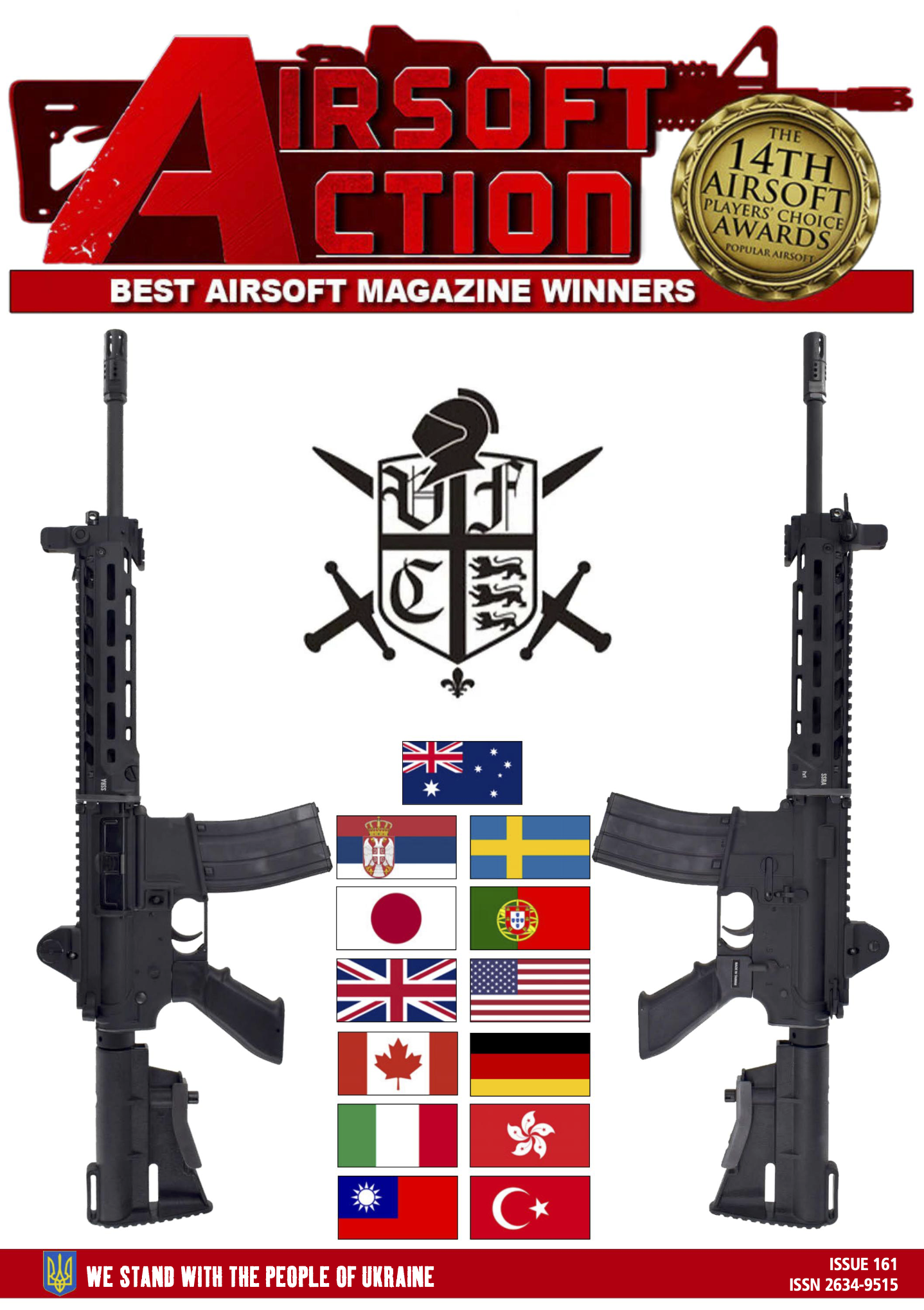Are you a Concealed Carrier?
There are a lot of lessons every concealed carrier needs to learn and get familiar with. Aside from choosing your weapon carefully and always carrying your permit, though, here are 7 additions to your gear that will help you with your responsibilities as a carrier.
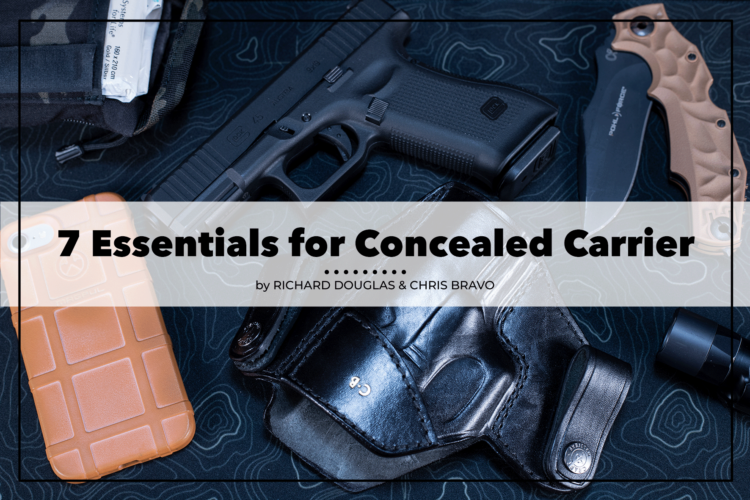
1. Concealed Holster
First and foremost, you need a concealed holster. The most common one is a holster that goes inside the hip of your pants, but they also make cross-draw and shoulder holsters for concealed carry.
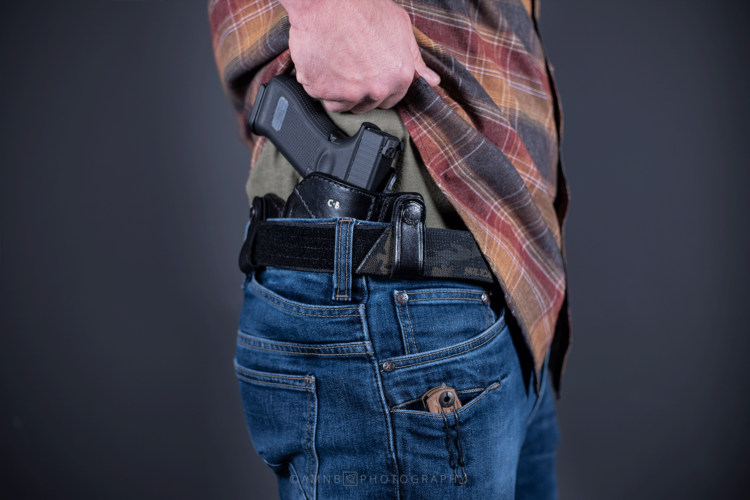
It’s all preference, because you’ll be the one wearing it, so go with the one that you’re most comfortable with and that fits your drawing technique. Make sure that you pick an ambidextrous holster if you’re left-handed.
While it may seem fun to pick one that looks cool, remember that the goal of concealed carry is concealment. Ideally, no one will ever see your holster to admire it anyway so a flashy design doesn’t matter.

2. Bring a Flashlight
Having a flashlight may not seem as important, but it can serve dual purposes. Not only will a flashlight help if you’re in a situation at night, but some lights are made to be used as a non-lethal weapon. If not, you might want to have pepper spray or something similar.
Gun-mounted lights might look cool, but the rule of concealed carry is to only draw your weapon if you need to. If you need to look inside a window or down a hallway, it might not be wise to have a flashlight that you can’t use separately from your weapon.
Still, if you want to find an illuminating optic for your handgun you might want to check out some red dot sight reviews to find one that’s versatile for your needs.
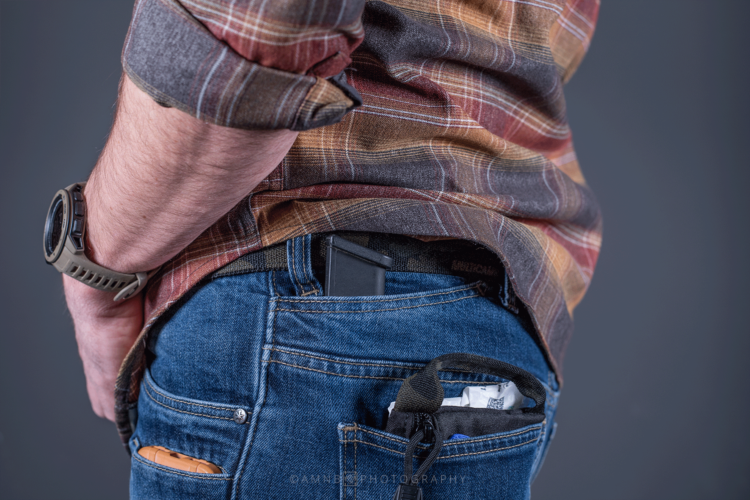
3. Extra Ammunition
Since you never know the situation you’ll be in, an important addition to any carrier’s wardrobe is an extra magazine or two. Having an extra reload can mean the difference between life and death if you’re outnumbered or in a bad scenario.
In the case of a revolver, it might pay to have a speed loader with enough rounds. Some concealed holsters have a pocket for ammo depending on the design, but a pocket or purse will work if you have no option. Just make sure you can get to them swiftly if the need arises.

4. This is a Knife
It’s always a good idea to carry a knife anyway, not only for EDC needs. If you’re saying to yourself, “I have a gun”, what happens if you’re somehow disarmed or your gun has a malfunction? There have been many instances around the country where a gun is pulled from its holster or the leak of ammunition / maintenance causes a failure.
Not only will a knife guarantee that you still have a weapon in a bad situation, but it’s also good for close-quarters where you might not get to use your gun safely. Make sure you practice pulling out your knife with speed, because it might save your life. “The knife you choose it’s up to you because, we all have our own preferences”.
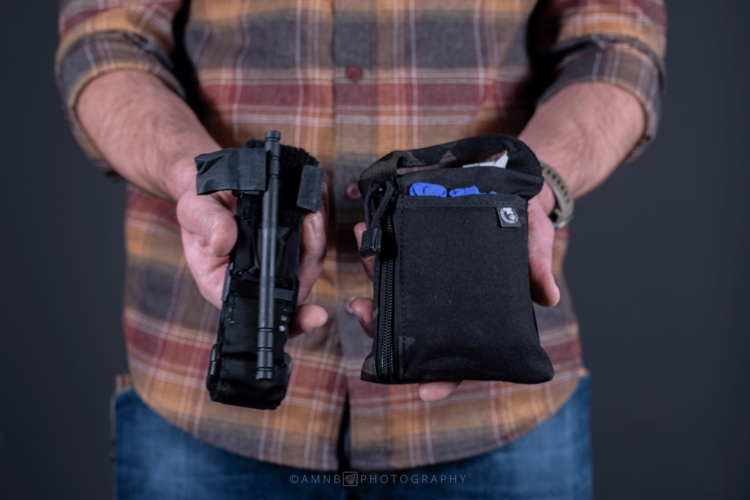
5. Homemade Medic
Whether to save your life or that of a bystander, basic medical equipment is essential for a concealed carrier. If guns or knives are involved, the biggest threat is blood loss so your first step is to stop the bleeding.
You should always have something to fashion a tourniquet, whether that’s a hose, a tie, or even your belt, but a bandage and gauze are also good to create pressure. You don’t need to carry around a first-aid kit if you have enough pockets or a tactical carrier.
QuikClot, Celox, or a similar product can fit in your pocket and clot blood. Put a bandage over it and it can temporarily hold a wound closed long enough to seek medical help. As a precaution you might want to brush up on basic first-aid, too.

6. Wear a Belt
Concealed carry is a life-or-death reality, so you want to pay attention to the little things. In this case, if you have a hip holster a good belt is a must-have addition. It will help hold up the weight of your gun while keeping the right angle for your draw.
The last thing you want to do is have to go for your gun only to fidget for it because your pants slipped down. This isn’t as important with a shoulder holster, but if you can’t find a tactical belt you might want to try a strong leather one.

7. Concealed Carrier Phone Home
This one may seem like common sense, but think about the last time you forgot your phone somewhere. Now picture forgetting it and getting in a situation where you had to fire your concealed carry weapon. Pretty important, right?
Being a concealed carrier comes with the responsibility of following the law. Part of that is calling the police when you find a situation where you might need to use your firearm or after the fact.
Calling the police will allow you to identify yourself, too, so that they don’t accidentally arrest you or worse by mistaking you for an armed criminal. Basically, if you have a license and carry a weapon don’t leave home with your phone.
A concealed holster, extra ammunition, and a phone are a must for any concealed carrier. Recommended additions to your gear are a flashlight and a strong belt, but be safe and stay aware.
CHOOSE THE RIGHT PANTS
If the pants in this article got your attention because you noticed it has a lot of extra pockets configured, you maybe go and check out LMS Gears website. The M.U.D. Denim is a jeans designed in-house by our good friends at LMS. The concept is to provide operative people that need to be dressed civil a pant that offer enough pockets to carry all you essential business tools in it. Like a concealed carrier! Have a look through their line-up here.
Other gear used in this article:
- Helikon-Tex Greyman Shirt
- Black Lion Gear M.U.P. XL
- MD Textil V-Belt
- Olight Odin Mini
- Pohl Force Alpha Two
- Craft Holsters IWB Leather Holster
Author Bio
Richard Douglas writes on firearms, defense and security issues. He is the founder and editor of Scopes Field, and a columnist at The National Interest, 1945, Daily Caller and other publications. Richard also writes for AMNB from time to time and shares his knowledge with our readers.




